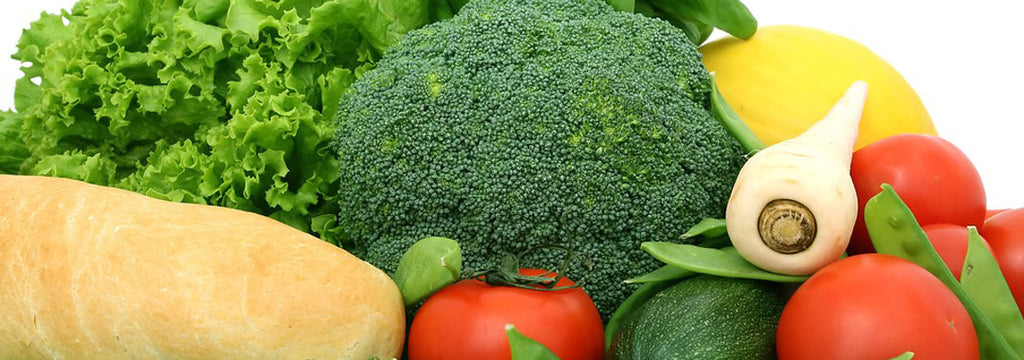
Since gluten-based foods are the primary source of fiber for the majority of Americans, those of us on a gluten-free diet have to go to extra lengths to make sure we're getting enough.
But the task of eating gluten-free is already pretty overwhelming, and this means that also paying attention to fiber intake can be a chore, to say the least. This is why we’ve compiled a few handy tricks for you to make this process easier! We'll also explain a little bit about why fiber is such an important part of a healthy diet, and add some tips about how to up your fiber intake in a healthy and safe way.
What is Fiber Anyway?
Fiber is involved in maintaining a healthy, functioning gut, but let's break it down a little further. There are two types of fiber - soluble and insoluble. Soluble fiber dissolves in water to form a gel-like substance, helping to lower your cholesterol. It is most prominent in legumes such as beans and lentils, as well as fruits, veggies, and seeds like flax and chia. Insoluble fiber soaks up water as it passes through your digestive system, and helps to combat constipation. Sources of insoluble fiber include quinoa, buckwheat, brown rice, fruits, veggies and nuts.
Incorporating both soluble and insoluble fiber into your diet will help improve intestinal motility and add rich, important nutrients important to maintaining a healthy gut.
Why is Fiber Important?
Let me count the ways. Fiber helps treat belly bloat, helps you feel fuller longer, helps maintain a healthy weight, and supports a diverse and thriving community of healthy gut bacteria. These beneficial bacteria manufacture vitamins, help protect you from foodborne illness, and stimulate the production of immune cells, helping boost your resistance to infection.
Not enough? Fiber also helps lower cholesterol, aids in maintaining stable blood sugar levels, reduces risk of heart disease, and also reduces the risk of breast, colon, and other cancers.
Why is Fiber Especially Important if You Are on a Gluten-Free Diet?
Most people not getting enough fiber are told to eat more whole grains. For us, this is a bit of a problem. The gluten-free versions of wheat-based convenience foods like pizza, pasta, waffles and cereal are terribly low in fiber, as they are made from low fiber flours and starches like tapioca and potato starch. This means we need to be especially diligent about seeking out additional sources of fiber to add to our diets.
It is especially important for those with celiac and gluten-sensitivity to maintain a healthy, well-functioning gut. This is about much more than simply avoiding gluten, and we need to treat our guts with specific care not just with what we don't eat, but also with what we do eat. Fiber can be especially important for those who suffer from diarrhea and constipation, and it helps combat so many of the uncomfortable gut symptoms that those of us with celiac and gluten sensitivity know too well.
Five Tricks to Up Your Fiber Intake
1) Switch Up your Grain Choice: Instead of relying on rice, potato and corn products in your meals, switch over to quinoa, buckwheat, millet, teff, sorghum or amaranth. Brown rice is also a fiber-rich choice. Use substitutions wherever you can: stir fries, burritos, casseroles and as side dishes to your choice of protein. If you find these grains to be less palatable, try mixing them with rice or adding seasoning or broth to give them some flavor. Experiment with using some of these high fiber gluten-free grains in your favorite recipes!
2) Beans! For those of us who can’t eat wheat, beans are the absolute best source of fiber. A cup of black beans, kidney beans or pinto beans has a whopping 20 grams of fiber! While preparing and cooking beans can seem daunting, it absolutely doesn’t have to be. Canned beans are an easy and quick way to add this fiber-packed food to your meal. Not sure how to incorporate beans into your diet? Add cooked beans to casseroles, soups, or salads. Some yummy bean dishes include Boston baked beans with hot dogs, Cuban black beans and rice, french lentil salad, or Moroccan chickpeas. Snack on edamame or on chips and crackers made from bean flour.
3) Drink Tons of Water. When consuming a diet rich in fiber, it’s important to drink enough water throughout the day to prevent constipation and to gain the most benefits from the fiber. Without adequate water intake, the fiber won’t do its job! Aim for eight 8-ounce glasses per day, and on hot days or days when you are especially active, add another few glasses.
4) Think Green. Odds are, if it’s a green fruit or veggie, it’s packed with fiber. One artichoke has 5 grams of fiber. A cooked cup of broccoli has 10 grams! Apples and pears have 4 grams each. Kale, edamame, green lentils, the list goes on. Try to add a green fruit or veggie to every meal and you’ll be increasing your fiber intake in no time.
5) Multitask with Your Food. One of my favorite ways to make sure I’m eating a nutrient dense diet is to include foods that kill two birds with one stone. It’s overwhelming to have to think about fiber, protein, omega 3’s and more, plus all the while paying close attention to not let any gluten sneak in. Chia and flax are not just great sources of fiber, they also are packed with heart healthy omega 3 fatty acids. Almond flour not only has three times the fiber as white rice flour, but also is high in protein. Choose a variety of vegetables, fruits, nuts, seeds and grains that are both fiber rich and also answer some of your other daily nutrient requirements.
Important Tips
Exercise: Getting daily exercise helps your gastrointestinal tract work better, and a better functioning system will make it easier for fiber to do its job.
Add Fiber Gradually: Upping your fiber intake too quickly can cause bloating, gas and abdominal discomfort. Try adding one extra serving of fiber per day, until you reach the daily recommended intake (25 grams for women, 38 grams for men).
What about Oats? The majority of people with celiac and gluten-sensitivity can tolerate oats, as long as they are certified as gluten-free. Oats are high in fiber and can be a great way to get a fiber boost early in the morning. Try hot or cold oats with some added berries, chia seeds, or ground flaxseed to add even more healthy fiber to your meal. 1 cup of cooked oatmeal provides 4 grams of fiber.
The silver lining in all of this? Recent research suggests that fiber from legume and veggie sources may be more important to overall health than fiber from whole grains. What are some easy and tasty ways that you add fiber to your diets?



Leave a comment